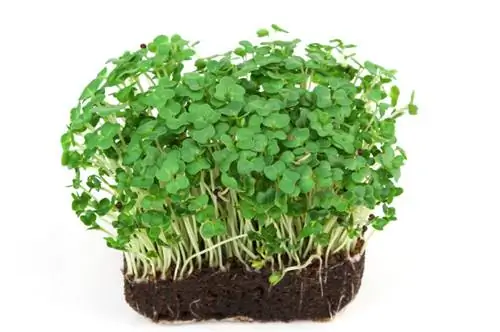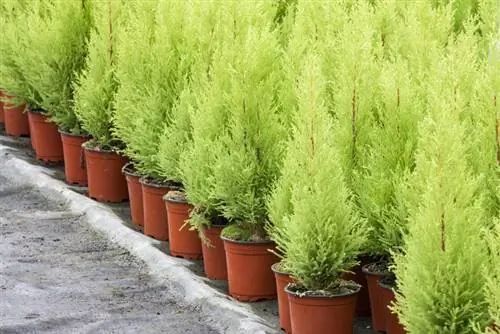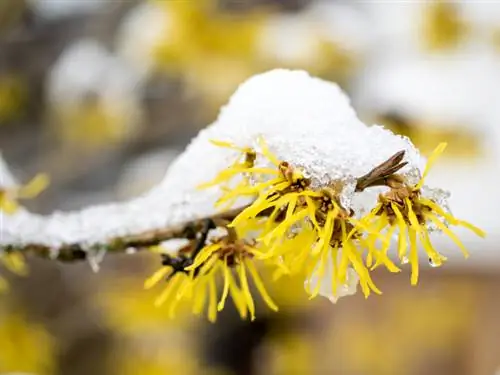- Author admin [email protected].
- Public 2023-12-16 16:46.
- Last modified 2025-01-23 11:20.
Although cypress trees are present all over the world, there are only 24 species of cypress trees in total. The evergreen trees, which usually grow in a cone shape, vary greatly depending on the species. This applies to the color of the leaves or needles as well as the height and speed of growth.

How many types of cypress trees are there and how do they differ?
There are a total of 24 species of cypress, which are divided into different categories such as true cypress (Cupressus), false cypress (Chamaecyparis), hybrid, hybrid cypress and room cypress. These evergreen conifers vary in leaf color, height and growth speed.
Classification of different types of cypress trees
- True Cypress
- Mock cypress
- Hybrids
- Bastard Cypress
- Indoor cypress
The botanical name of the cypress is Cupressus, the Latin name of the false cypress is Chamaecyparis. They all belong to the genus of conifers and here to the conifers. Cypresses are very long-lived trees. There are specimens estimated to be 400 years old.
Mock cypresses differ from real cypresses in that they have more flattened branches. The cones are also smaller than those of the real cypress.
The botanist understands bastard cypresses as cultivated forms that have arisen from different types of cypresses. An example of a bastard cypress is the Leyland cypress, which was bred from the Monterey cypress and the Nootka cypress.
Using cypress trees in the home and garden
Cypresses are grown in gardens as individual trees or planted as hedges. Because of their rapid growth, they form a good privacy screen. Indoor cypresses can also be grown indoors.
Many types of cypress are suitable for cultivation in a pot. However, watering must be done more frequently here. The planters must have a sufficiently large water drain to prevent waterlogging.
Almost all cypress species prefer a location that is as sunny as possible, but also grow well in semi-shady locations.
Caring for cypress species
Cypresses require humus-rich, slightly acidic soil. The soil must always be slightly moist, but waterlogging must be avoided at all costs.
Fertilizing cypress trees is usually unnecessary because the trees can survive on few nutrients.
Most cypress species tolerate pruning very well. They can be easily cut into shape. However, cutting back into old wood should be avoided as no new shoots will grow in these places.
Cypresses are only partially hardy
Most cypress species cannot tolerate sub-zero temperatures over a longer period of time. Cypresses planted outdoors therefore need a protected location, for example in front of a wall. Alternatively, they are protected from severe frost with mulch blankets (€54.00 on Amazon).
The biggest problem in winter is too little moisture. Cypress trees need to be supplied with additional water on frost-free days, even in winter.
Cypress trees are poisonous
Caution is advised when planting cypress trees in gardens where children and pets will be present. All cypress species are poisonous. They contain thujone and essential oils.
In sensitive people, even contact with the plant sap can trigger skin inflammation.
If needles, cones or shoots of the cypress are eaten, severe symptoms of poisoning can occur.
Tip
A type of cypress that can cope with very inhospitable conditions is the so-called Sahara cypress. The species, which occurs in the Tassili n'Ajjer massif in the Algerian Sahara, is a UNESCO World Heritage Site. The population, estimated at 153 to 213, is protected.






